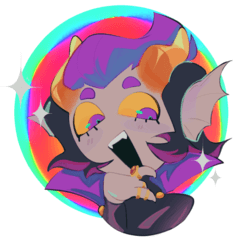Blending Modes Techniques
What are blending modes?
Blending modes are layer styles that could be used to get interesting effects on your artwork. To access them you need to make a layer and click Normal on the layer panel.
As you can see I categorized layer modes.
Red will only darken, no matter the color.
Green will only lighten, no matter the color.
Turquoise will lighten AND darken depending on the color.
Special will do crazy effects, which is why I do not recommend them at all.
Purple will change your hue, color, saturation, black and white values. It is a very delicate blending mode, so most of the time it will not make huge changes.
It is a lot of blending modes. I have been drawing for a while, and most of the time I only use these. The other ones are not so useful.
These are the modes that I use. You can experiment with other ones if you like, but I highly recommend learning these as much as possible.
Applying texture with Overlay / Multiply
A quick and easy way to add texture to your piece is to use multiply or overlay mode (sometimes hard light is nice too)
Thankfully Clip Studio Paint has a variety of textures in Material panel!
Here is an example of applying Oil Paint texture on Overlay at 20-40%. As you can see the image did not change in the whites for the most. Overlay and other blending modes change mid tones the most! I highly recommend painting in the mid tones area as much as possible. Do not push your whites and darks early!
If the color is 50% grey, it will not change the image when using overlay. Once you go up or down, the overlay will change the saturation / hue / values. In short, Overlay will make darks darker and brights brighter.
You can push your contrast even more with some airbrushing. Mid grays will not change anything at all.
If your image is black and white then it is best to use Overlay. I love using paper texture in my paintings. Find some on the internet or make your own by scanning the paper. It will make an interesting effect for the artwork.
Keep in mind that Multiply will eliminate pure white. It will simply remove it completely! Here is a quick multiply effect with an old paper texture. I did not even have to adjust the opacity. If the effect is too strong I suggest using curves to fix it. It makes it look more natural.
Using halftone in your artwork is also great way to add some texture. If you work in black and white it is amazing, but it might come off too harsh in a colored painting. I suggest setting it to overlay, which will make the piece look very stylized.
You can mix and match between pure black and white for overlay. Just keep in mind that you can adjust the strength of the effect later down the line.
Color Dodge - special effects & coloring
There are two main ways to use color dodge that I found useful. Obviously there are way more, so I suggest just experimenting as much as possible. Keep in mind that is it is a very strong effect, so keeping the opacity at 5-10% is recommended. Also using low opacity on the brush is recommended.
First way to use color dodge is for special effects. I found it useful for things like spells, glow, or any other magical origin. Here is a quick example.
Second way is simply adding finishing touches for final artwork. If it stylized, it will work wonders. Just pick a color that you think should be the strongest light and add it on low opacity with an airbrush. Think of where the focus of the illustration should be.
You can also use color dodge to add some bloom effect and lighten the image. In order to do that, merge visible -> set to Color Dodge -> Filter -> Blur -> Gaussian blur. Change the opacity to 10-20%. This is a very strong effect, so be careful and do not overdo it.
Color Mode to unify the art
Weirdly enough color should not be used in order to color the artwork. If you have black and white image, I do not recommend using it. ( I usually recommend using Gradient Maps or Hard Light mode ). Color mode makes your artwork look flat and does not look appealing.
Color mode will not affect your tones for the most part. If you turn your image into black and white and add crazy hue on color mode - tones will not be affected.
It works great if you already have established your entire image. Adding slight color adjustments is amazing. Here is an example.
Another way is to unify crazy colors. Beginner artists use too much color too quickly, so the art pulls different directions. A quick way to simplify and average colors is to use one color you want and set it to low opacity. I made a very simple example, but I hope this helps to see the difference. Like this:
Quick tip on creating Black and White tones for your artwork. If you use a lot of color, it is hard to check your values. An amazing way to do so is to create a layer on top of your artwork -> fill with black -> set blend mode to color. Bam, you have black and white image of your art. You can see which values are too light or too dark.
As you can see the tones are not too bad. You can see that the sky is the lightest and the mountains are the darkest. Looks pretty good.
I hope this helps. Let me know if you have any questions. You can also check out my video and see a little more real time examples.
My social media links:
























Comment